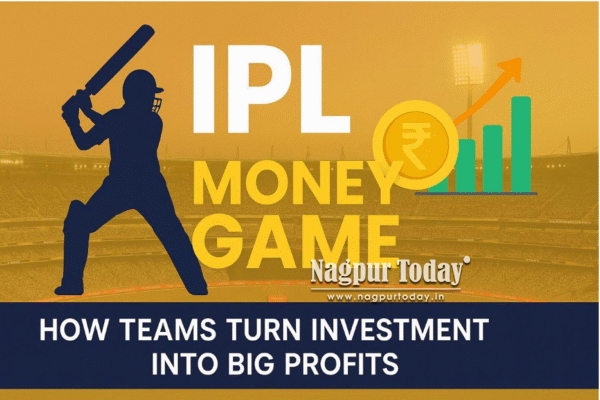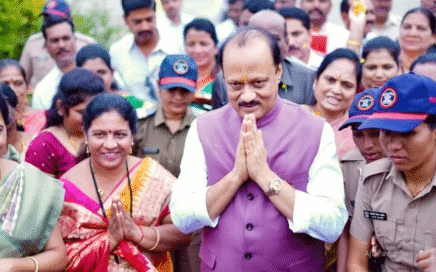
The Indian Premier League (IPL) is not just a cricket tournament—it’s one of the most profitable sports businesses in the world. From big player auctions to brand deals and global broadcasting rights, the IPL is a money-making machine. Team owners don’t just invest in players; they build business empires around cricket.
Let’s break down how IPL teams convert their huge investments into long-term profits, why it’s considered one of the most innovative business models in sports, and how financial planning plays a key role in sustaining success.
Heavy Investment, Bigger Returns
Buying an IPL franchise isn’t cheap. The newest teams—Lucknow Super Giants and Gujarat Titans—were sold for ₹7,090 crore and ₹5,625 crore respectively in 2021. These aren’t just sports teams; they are billion-rupee businesses.
While the upfront investment is high, IPL teams earn money from multiple channels:
- Media rights revenue (shared by the BCCI)
- Sponsorship deals
- Merchandise sales
- Ticket sales
- Brand collaborations
- Prize money
In 2022, BCCI sold IPL’s media rights for a whopping ₹48,390 crore for five years, with a significant chunk going to the team.
Teams don’t just depend on match wins to earn. Even if a team doesn’t make it to playoffs, it still receives a share from the central revenue pool.
Media Rights: The Real Gold Mine
Media rights are the most significant source of income for IPL teams. Disney Star paid ₹23,575 crore for TV rights, and Viacom18 paid ₹23,758 crore for digital streaming rights for the 2023–2027 cycle 2.
This massive income is divided among all ten teams. The share depends on team ranking, performance, and tenure in the league. For example, established teams like Mumbai Indians and Chennai Super Kings earn more due to their larger fan bases and consistent branding.
The beauty of this model is that even without filling stadiums or winning titles, teams earn from the media pie.
Sponsorships: Brand Partnerships Fuel Team Profits
Each team signs multiple sponsors—jersey sponsors, title sponsors, and digital partners. These partnerships generate massive cash flows. Some big examples:
- Mumbai Indians had Slice, DHL, and Marriott Bonvoy as major sponsors in 2023.
- Royal Challengers Bangalore had Qatar Airways as its title sponsor.
- Chennai Super Kings renewed their long-term association with India Cements.
According to media estimates, top teams earn ₹70–100 crore per season through sponsorships alone 3.
These deals support operational expenses and help teams build stronger financial foundations for the future. They also reflect the team’s market value and brand power.
Merchandise Sales: Building a Fan Economy
Teams make money through official merchandise—jerseys, caps, keychains, etc. With the rise of e-commerce, teams now sell official merchandise directly via apps and websites.
For better reach and sales, top teams also partner with brands like Puma, Adidas, and FanCode. The merchandise market is estimated to be worth ₹150–200 crore annually during IPL season, growing yearly.
This income may be smaller than media rights, but it’s a steady and direct connection with fans, adding brand loyalty and consistent revenue.
Ticket Sales: Direct Money from the Stands
Gate receipts from home matches are another revenue stream. IPL stadiums like Wankhede, Eden Gardens, and Narendra Modi Stadium hold tens of thousands of fans. With average ticket prices ranging between ₹500 and ₹10,000, a single match can generate ₹3–6 crore in ticket sales.
While this was affected during COVID-19 seasons, the 2023 IPL saw full stadiums again, boosting match-day revenue.
Many teams now create premium seating and fan zones to charge higher for better experiences, turning live matches into profitable events.
Smart Cost Management and Financial Planning
Earning big doesn’t mean spending blindly. Teams follow strict financial planning to manage salaries, auction budgets, and operational costs. Many use expert financial advisors for:
- Budget planning
- Tax-saving strategies
- Insurance coverage for players and staff
- Investment in grassroots academies and infrastructure
Some teams also invest in off-season training programs and own international cricket academies, building long-term brand value and creating future income sources.
To reduce risk, owners also secure insurance policies against match cancellations, player injuries, and weather disruptions.
Brand Value Drives Long-Term Growth
Team valuation is not just based on match wins. It’s about brand reach, consistency, and emotional connection with fans. Chennai Super Kings, Mumbai Indians, and Kolkata Knight Riders are consistently among the highest-valued IPL teams 4.
These teams also invest in global cricket markets. For instance:
- Kolkata Knight Riders own franchises in the Caribbean Premier League (CPL) and Major League Cricket (MLC) in the US.
- MI Global is building a multi-team brand across different leagues.
This global expansion increases revenue and long-term brand stability, just like multinational companies diversify their investments.
The Bigger Picture: IPL as a Long-Term Investment
Owning an IPL team is like owning an asset. Its value grows over time. Even teams like Rajasthan Royals, which started with smaller budgets, now enjoy high market value due to their wise investment in youth, content creation, and digital marketing.
IPL teams also offer retirement benefits to some players through lifetime association, ambassador roles, and coaching positions. These programs ensure long-term savings and loyalty.
Investors now look at IPL franchises like startups or brand portfolios—risky initially but highly rewarding over time.














